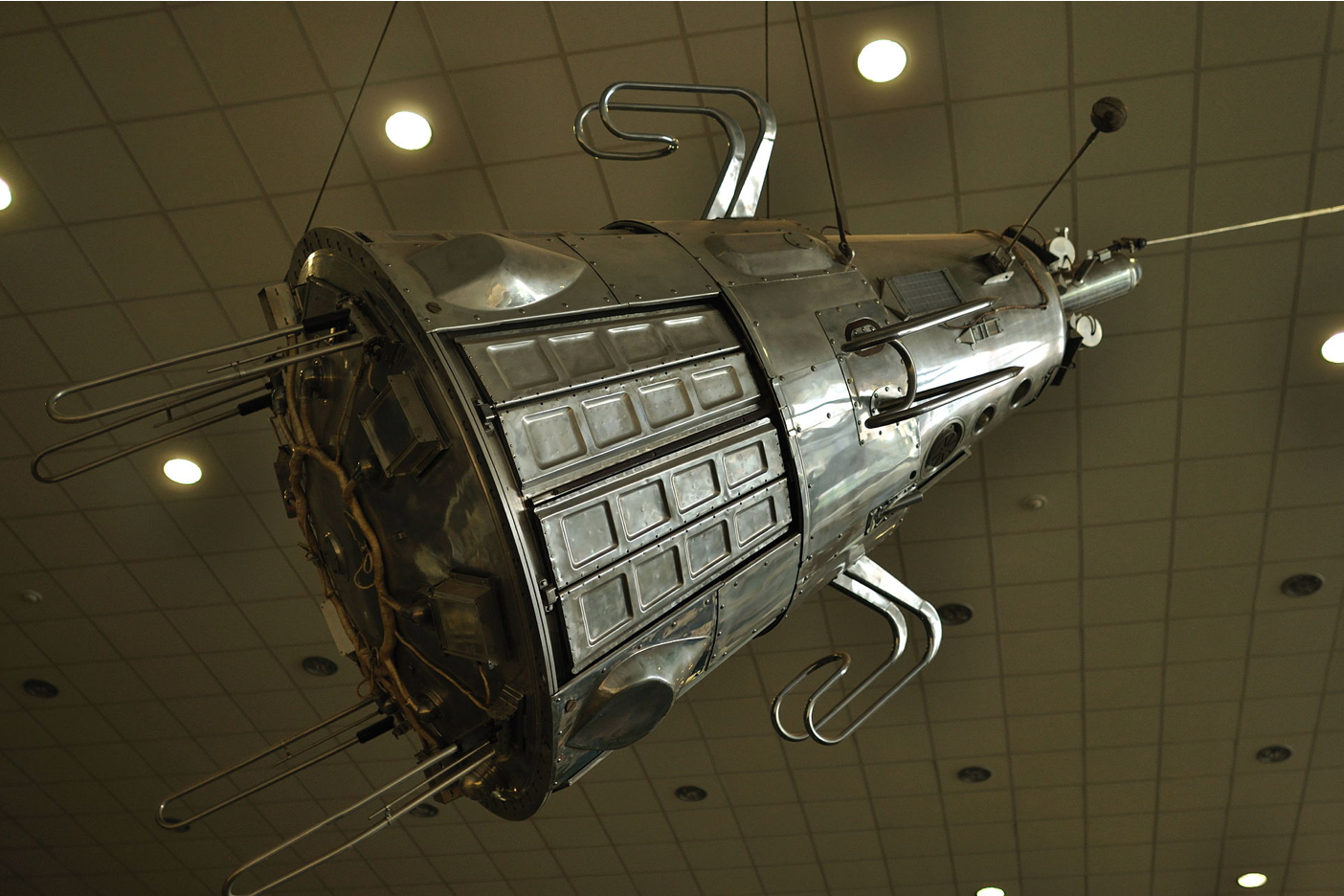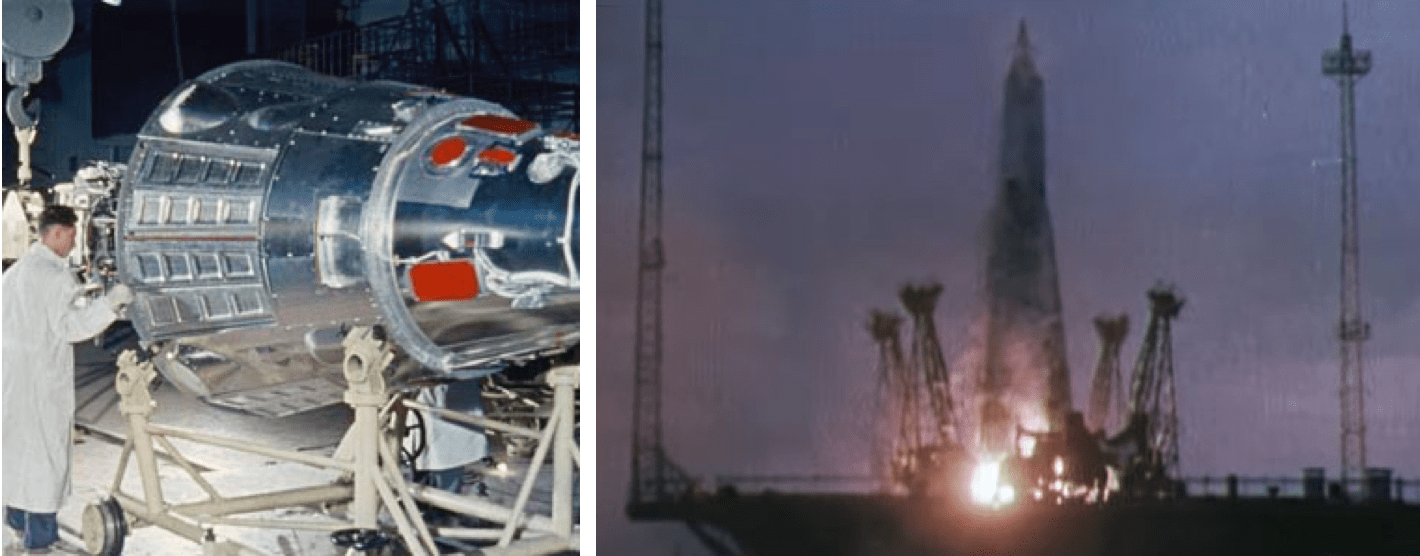On May 15, 1958, Soviet Chief Designer Sergey P. Korolyov saw his dream come true. His scientific satellite that he dubbed Object D and that the world would know as Sputnik 3 finally made it to orbit. While more capable than its simpler predecessors, problems with its recorder prevented it from achieving all its science objectives.
Sputnik 3, however, played a significant role in the space race. Korolyov had been working on the Object D project for two years, as part of the Soviet Union’s response to the International Geophysical Year (IGY) to study the near Earth environment by launching a scientific satellite. But faced with American plans to also launch a satellite during the IGY, Soviet Premier Nikita S. Khrushchev almost derailed Korolyov’s dream, ordering the Chief Designer to come up with a simpler satellite that could be launched sooner, in time to beat the Americans. That became Sputnik launched in October 1957, the world’s first artificial satellite. When Khrushchev saw the political benefit of Sputnik he ordered Korolyov to quickly launch Sputnik 2 in November 1957, this time with a dog on board that became the first animal to orbit the Earth. Satisfied that the Soviets were well ahead of the Americans, Khrushchev left Korolyov alone, and the Chief Designer resumed work on Object D. Being prudent, he decided to build two satellites, just in case.
In April 1958, Object D and its rocket were ready and on the pad at the Baykonur Cosmodrome in Kazakhstan. The launch on April 27 started off well enough, but about 90 seconds into the flight, the rocket disintegrated in flames and came crashing back to Earth. Miraculously, the satellite survived the crash nearly intact, but when engineers returned it to the launch site, a fire caused by an electrical short circuit nearly destroyed it.
Undaunted, Korolyov prepared the backup Object D for flight, and readied it for launch on May 15. This time, all went well and Sputnik 3 entered its planned elliptical orbit around the Earth, becoming the sixth artificial satellite after its two Soviet predecessors and three satellites that the Americans launched in early 1958. At 2,926 pounds it was by far the heaviest satellite ever orbited, carrying 12 battery-powered instruments to study the Earth’s upper atmosphere, magnetic fields, radiation environment and cosmic dust. The various instruments collected data for one week to one month, but unfortunately the onboard tape recorded failed shortly after launch, precluding the recording of data during critical parts of the spacecraft’s orbit when it passed through what are now known as the Van Allen trapped radiation belts. Sputnik 3 reentered the Earth’s atmosphere on April 6, 1960. Its telemetry transmitter and scintillation counter, both powered by experimental silicon solar batteries, operated until the end.
In the United States, in response to the first Sputniks, Congressional hearings led to a consensus that a civilian agency should be established to run the American space program. In April 1958, President Dwight D. Eisenhower in a speech to a joint session of Congress called for the creation of such an agency. The launch of Sputnik 3 provided strong additional impetus for the passage of the National Aeronautics and Space Act in July. President Eisenhower signed the bill into law later that month and the National Aeronautics and Space Administration began operations on October 1, 1958.
























